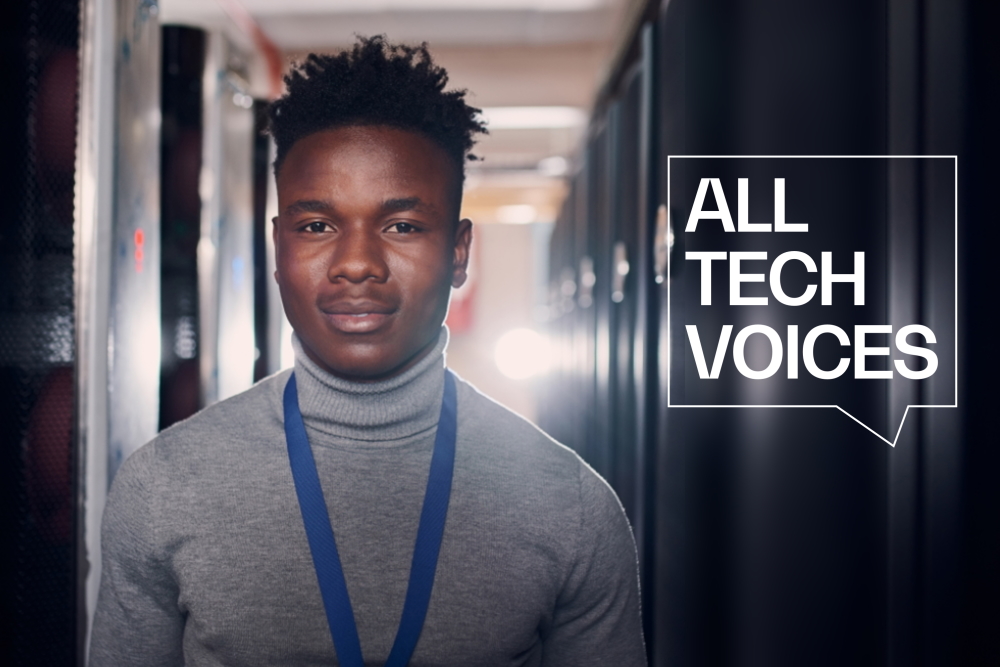Article
All Tech Voices: Time for tech to unlock the power of neurodiversity

Diffusion has launched All Tech Voices to help advance the debate on how increasing representation and understanding of diverse audiences can strengthen the technology sector. This month we welcome Cognassist CEO, Chris Quickfall to discuss the importance of neurodiversity in tech and the challenges that neurodiverse employees from minority backgrounds can face.
It’s no secret that the tech sector has had a long-standing D&I problem, but what we think of when we talk about this issue is changing. Neurodiversity, referring to individual differences in brain functioning, thinking and learning, has remained somewhat under-represented and under-supported in the world of work, and even in 2022 there is still some way to go in ensuring everybody is offered equal opportunities. This means those who are neurodiverse are frequently left behind in the workplace.
Where neurodiversity intersects with other demographics such as race and age, progress in representation becomes even more important. As an organisation with a mission to help every learner reach their full potential through cognitive assessment, this was an issue we have decided to begin to address head-on with our recently launched Underresearched + Undiagnosed campaign. We are privileged to be working with writer, broadcaster, and mental health campaigner Chanté Joseph, to raise awareness of the fact that certain groups in society, especially women and people of colour, are far less likely to have their neurodiversity recognised and diagnosed.
For example, in the UK, it has been found that Asian school pupils are half as likely to be identified with autistic spectrum disorders (ASD) as white British pupils. Black people also tend to be diagnosed later and less often, and are frequently misdiagnosed: autism tends to be misdiagnosed as ADHD or Oppositional Defiant Disorder. Coupled with the fact that women, and especially Black, Asian, Mixed Race and Ethnic Minority women, are much more likely to engage in ‘masking’ – when someone hides the true extent of their symptoms – it’s even more apparent that there is a real lack of focus on them as a demographic. Together, we’re encouraging those who think they are neurodiverse to seek support and prompt employers and other institutions to offer this to them.
That the majority of many tech companies’ workforces have historically looked, sounded and thought the same isn’t just a HR issue, either – it has had a profound impact which and how products and services are developed and, therefore, on the experience for every user. There are many examples of this ‘technology bias’: many facial recognition technologies can almost perfectly identify white faces but are inconsistent for people of colour. Not only is this clearly hugely discriminatory, but put simply, a lack of diversity is bad for business. The work already being done by companies to build more diverse and inclusive workplaces is vital and must continue, and increased awareness of neurodiversity is the next frontier in D&I.
Creating a welcoming and safe environment for employees is important, but employers must also engage holistically and implement practical solutions to allow employees to work at their best and to their fullest capabilities – everyone has valuable attributes they can offer their workplace. People on the autism spectrum, for example, have been found to have stronger attention to detail, work ethic, and often above-average quality of work.

Increasing D&I and neurodiversity in the workplace also has tangible benefits for businesses. A diverse and inclusive culture accelerates innovation and fosters greater creativity – in a survey by PwC, 78% of CEOs said D&I helped them to innovate. In groups with more cognitive diversity, teams are more likely to embrace different perspectives, providing opportunities to change and evolve.
Perhaps most importantly for organisations, research has found that the impact of D&I on revenues can be significant: increased inclusivity creates a more cohesive environment for employees, leading to enhanced productivity. McKinsey recently found that companies in the top quartile for diversity have an average of a 36% uplift in profitability.
To solve the problem of diversity in tech, it’s likely to be tech itself that is the answer. It is arguably the best way to empower businesses to ensure that all employees are well-adjusted and supported in their roles. We already have the capability and tools for mapping brain profiles and understanding both areas of strength and weakness.
At Cognassist, we believe it’s crucial to identify hidden learning needs free of bias, which is why we have also partnered with the BAME Apprentice Network as part of our Underresearched + Undiagnosed campaign to provide free assessments to their members.
Through our work with organisations that support neurodiverse apprentices, we have seen profound increases in retention and success rates following assessments, with a 10% and above increase in attainment for those with identified needs. Being able to identify how people’s brains work not only assists in improving diversity at hiring and leads to a more open and inclusive workplace culture overall, but also ensures employers and employees are better armed with the tools they need to learn and work effectively, support each other, and reach their full potential together.
You can listen to Episode 3 of Cognassist’s ‘Neurodiverse Life’ podcast, featuring Underresearched + Undiagnosed ambassador Chanté Joseph, here.





